The American Diabetes Association (ADA) defines therapeutic inertia as “a delay or inaction to initiate or intensify therapy when glycemic treatment goals have not been met.” The ADA points to therapeutic inertia as the reason many patients with type 2 diabetes live with poorly controlled diabetes, a situation that has not changed for decades.
My name is Israel Hodish, and I am a cofounder and the medical director at Hygieia, the creator of the d-Nav Insulin Management Program and am a practicing endocrinologist at the University of Michigan. I see many new patients with long-standing type 2 diabetes.
My typical first-time patient is 40-60 years old, with type 2 diabetes and has had it for more than 10 years. Their HbA1c levels are generally in the 9%-11% range, and have been that way for months, often years. Usually, they have been treated with multiple different drugs for diabetes, including the latest new classes. Unfortunately, most of them have an HbA1c higher than the recommended range and about a third live with an HbA1c higher than 9%. Their providers can feel that they have run out of options, rationalizing that lifestyle choices made by the patient have prevented effective treatment. The patients are usually depressed and have given up hope.
Let’s think about another disease. Imagine that a 52-year-old woman with invasive breast carcinoma comes to her oncologist for follow-up after a mastectomy, radiotherapy and chemotherapy, and the oncologist finds a metastatic spread. Would they blame the patient for not taking her Tamoxifen, or not returning for oncology follow up on time? Or would they choose to start a new chemotherapy regimen regardless of the patient’s potential fault?
Naturally, most oncologists understand that an aggressive treatment approach is appropriate for a disease that has a 5-year survival rate of less than 50%. There is no time to lose because the risk is just too high.
I give this example, because prognosis of a patient with poorly controlled diabetes is similar to someone with advanced breast carcinoma. Yet, in our treatment of diabetes we often take less aggressive approaches like offering a different diet or more physical activity, and then wait for a few months.
Is an endocrinology clinic really that different from an oncology clinic when treating patients with life-threatening diseases? Why are expectations to make major and frequent treatment decisions not the same?
In medicine, we rarely prescribe a drug and consider our work done; we always follow a treatment marker and adjust drugs doses and types until therapeutic goals are met. Then we continue to monitor these markers to make sure that these goals are maintained. For example, we don’t prescribe anti-hypertensive medications without following-up with blood pressure checks and we don’t prescribe tacrolimus without monitoring plasma levels.
In diabetes, the treatment marker is average glucose or HbA1c. The ADA’s position is that it does not matter that we have already recommended lifestyle modifications or prescribed 5 different drugs. The HbA1c needs to be maintained around 7% and kept that way.
Blaming our patients for treatment failure is not fair and happens much too often. People who are unfortunate enough to live with poorly controlled diabetes can be helped, but we need to be diligent in our treatment. Once they have become overtly insulin deficient and only insulin therapy can bring their glucose down, it becomes much more challenging to help them achieve and maintain our glycemic goals.
Fortunately, we live in an era with tools to make insulin therapy more effective and safer than it has ever been. Autonomous frequent insulin titrations is an available modality, both for insulin pump users and patients who inject insulin.


